Backroads of Iberia: Spanish Paradores & Portuguese Pousadas
September 30 - October 16, 2018
Part Two: Spain, Page Three - Cordoba, Ubeda, and Baeza
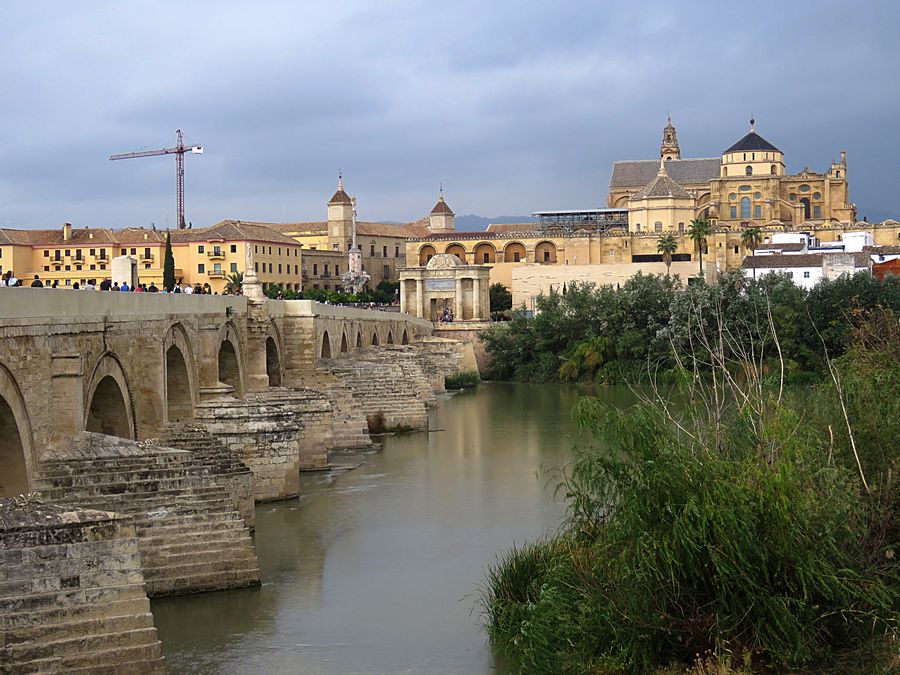
Leaving Ronda, we journeyed to Cordoba,
originally founded as
a Roman colony.
It was an Islamic capital in the 10th century.
Today it is known for the Mezquita, an 8th
century mosque converted
later into a Cathedral.
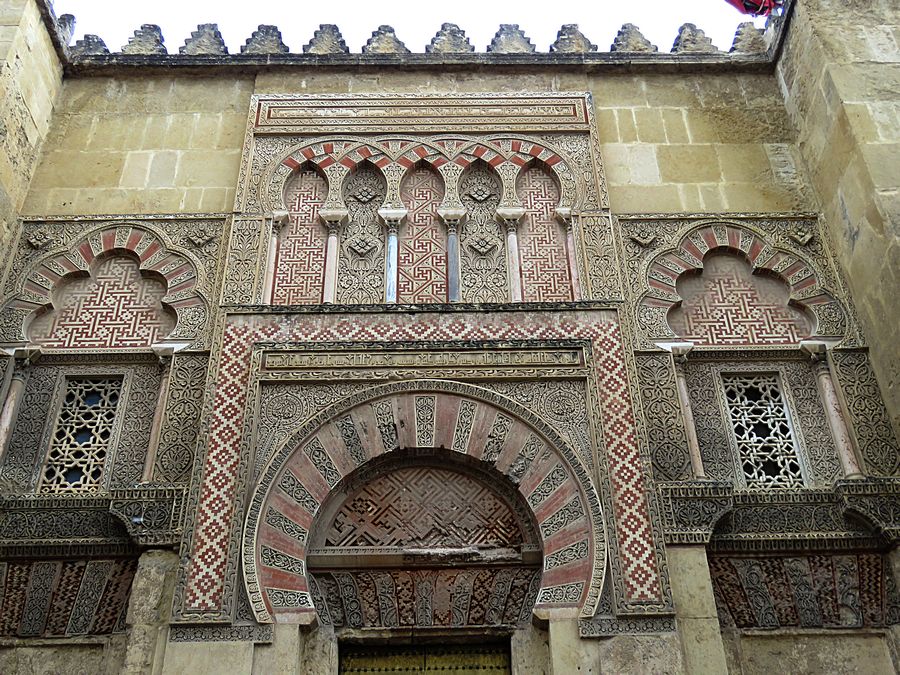
A wall of the mosque
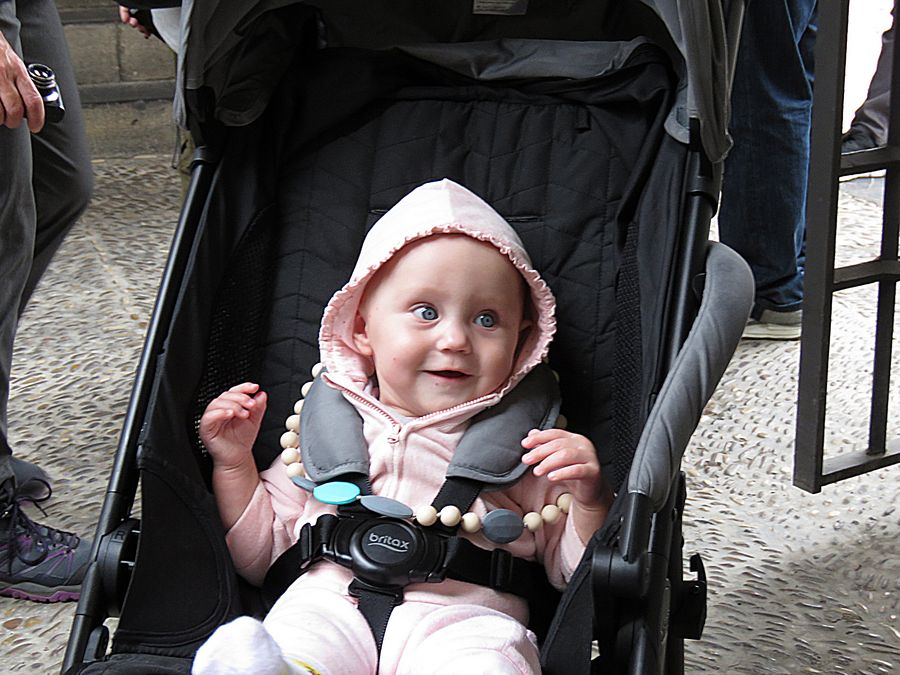
A happy baby near the mosque
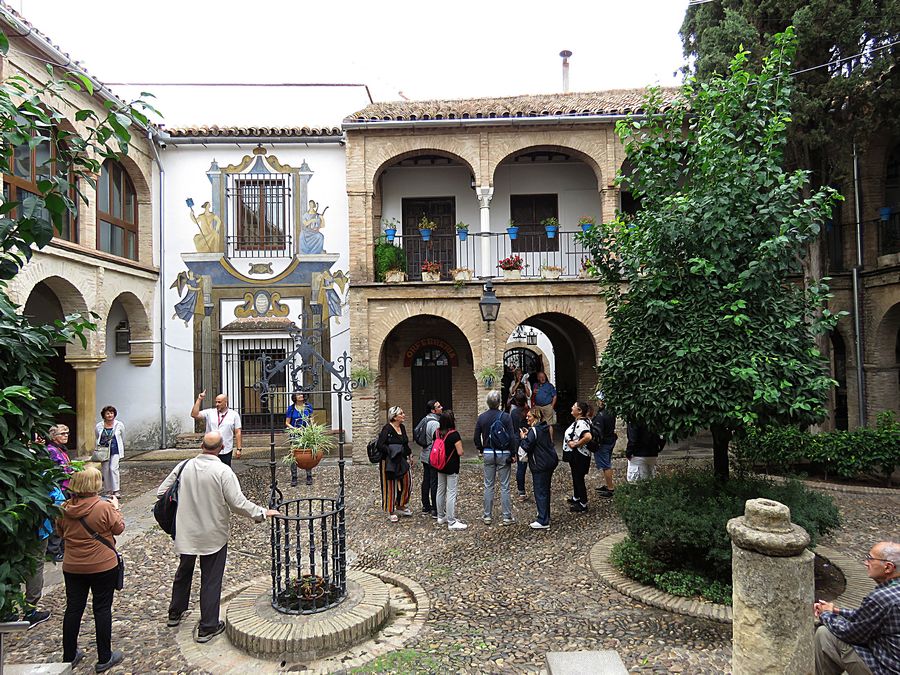
A courtyard in Cordoba surrounded by living units.
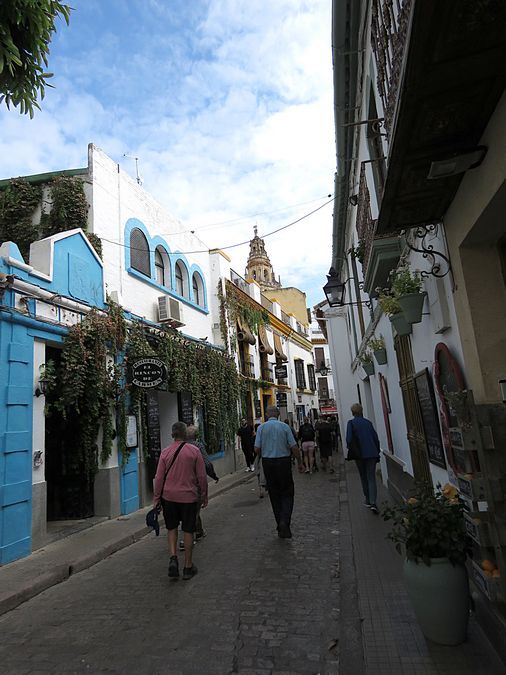
Street scene in Cordoba; the mosque in the background

The Mosque–Cathedral of Cordoba, also known as the Great
Mosque of Cordoba
and also the Mezquita,
whose ecclesiastical name is the Cathedral of Our Lady
of the Assumption. It is the Catholic cathedral of the
Diocese of Cordoba
dedicated to the Assumption of the Virgin
Mary.
The structure is regarded as one of the best
monuments of Moorish architecture.
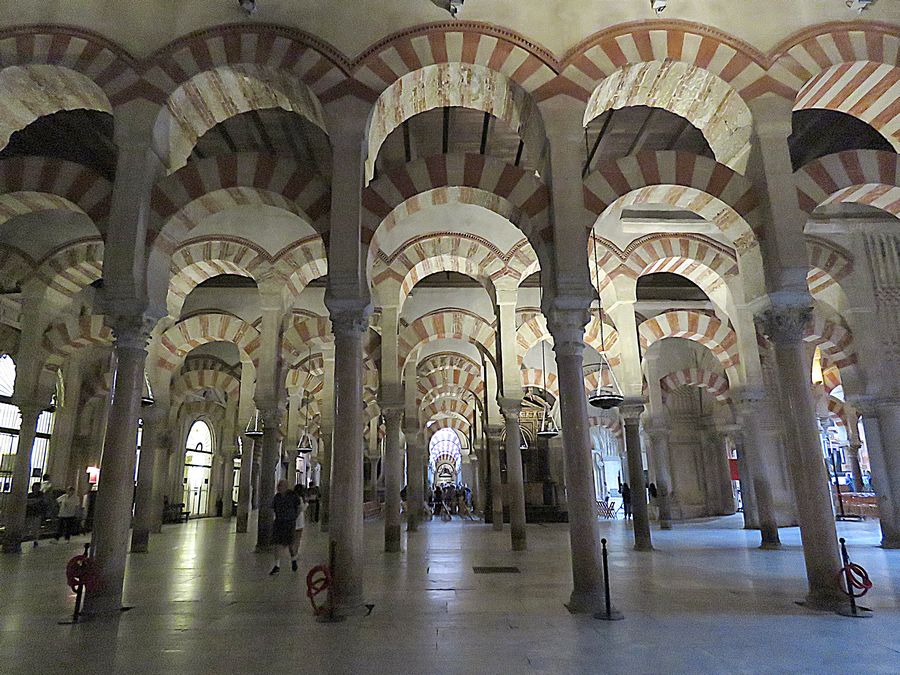
According to a traditional account, a small Visigoth church,
the Catholic Basilica
of Saint Vincent of Lerins,
originally stood on the site. In 784 Abd al-Rahman I
ordered construction of the Great Mosque, which was
considerably
expanded
by later Muslim rulers.
Cordoba returned to Christian rule in 1236, and the
building was converted to a Roman Catholic church.
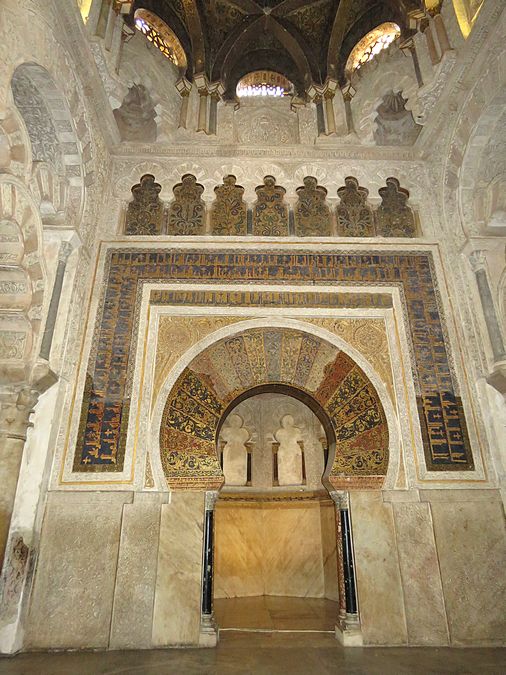
The Mihrab in the Mosque-Cathedral of Cordoba.
It is a semicircular niche in
the wall of a mosque
that indicates the direction of Mecca and thus
the direction that Muslims should face when praying.
It was left there
when the Mosque
was replaced by a Catholic Church.
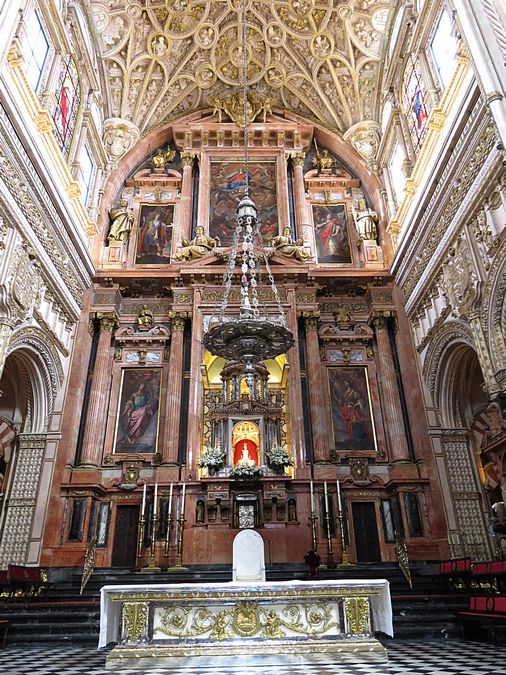
In the center of the mosque is a Renaissance cathedral which
dates back to the early sixteenth century.
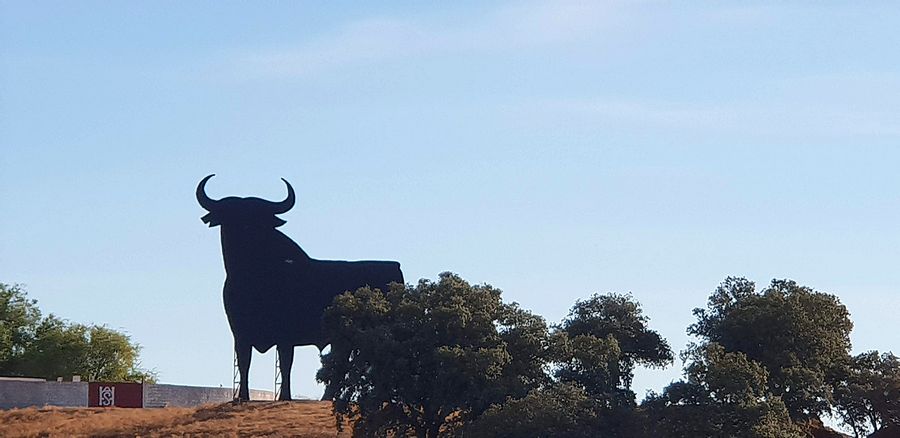
Statue of a bull seen along the road to Ubeda, Spain
A liquor company erected large images of bulls starting in
1956
to advertise
their brandy. The images were
black with the brand name in red on it and advertising
boards were located near major roads throughout Spain.
In 1994 the EU passed a law that prohibited all roadside
advertising of
alcoholic beverages, so the bulls were to be
removed.
By this time the
signs were nationally
renowned, so public demand resulted in the signs being
retained, but completely blacked out to remove
all reference to the advertisers.
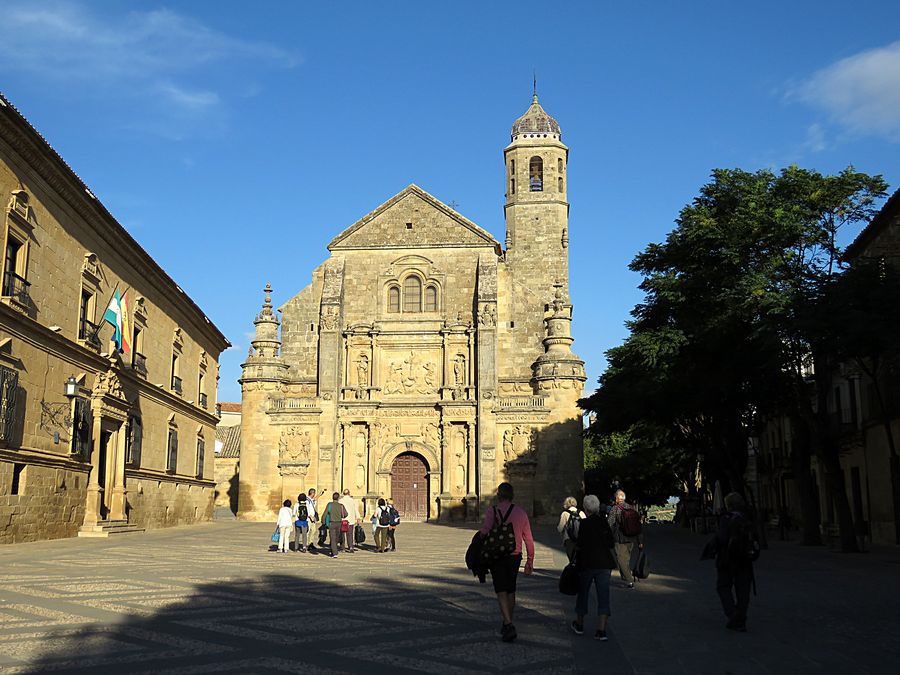
Our Parador de Ubeda is on the left, where we stayed 2 nights.
It is located in the Ubeda's Renaissance era main square. In the
center of the photo is El Salvador Chapel.
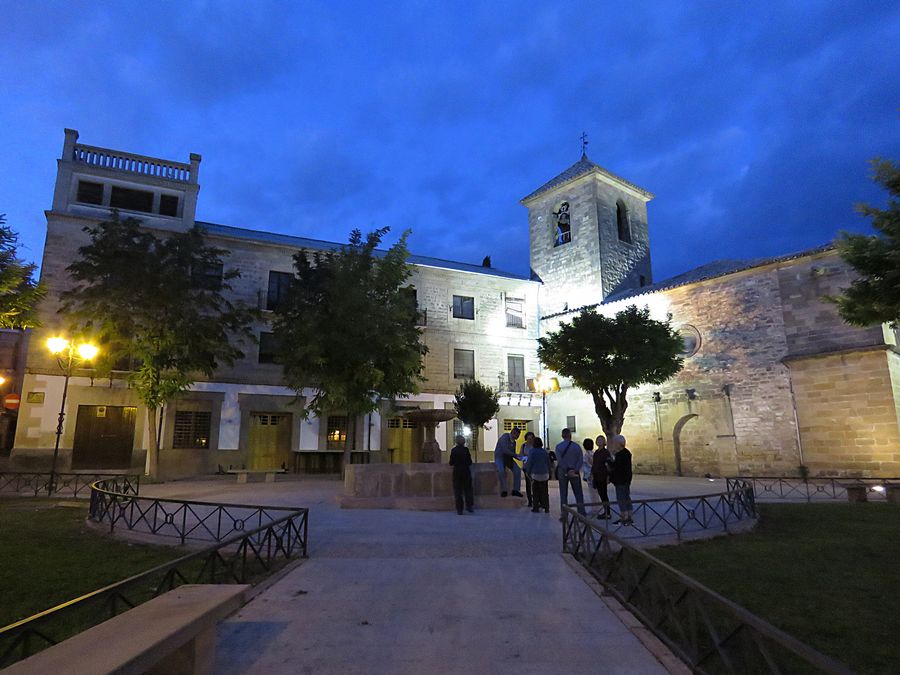
One of the numerous Renaissance style churches
in Ubeda.
Both this city and the neighboring city of Baeza
benefited from extensive
patronage in the early
16th century resulting in the construction of a series
of Renaissance style palaces and churches,
which have been preserved.
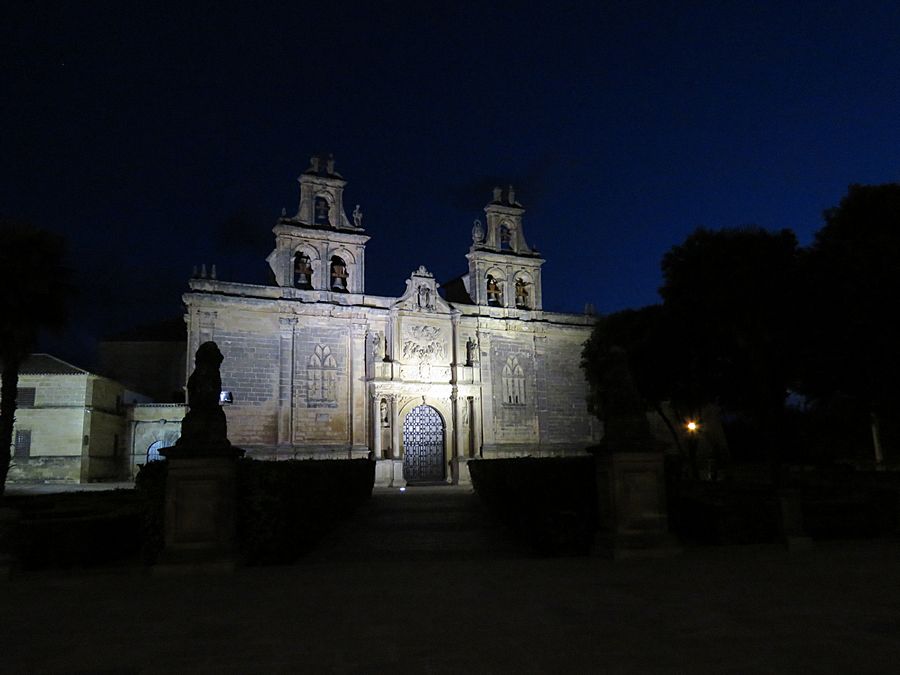
Basílica de Santa María de los Reales Alcázares
(Santa Maria Church) - yet
another ancient mosque
that was converted into a Catholic Church, in 1233.
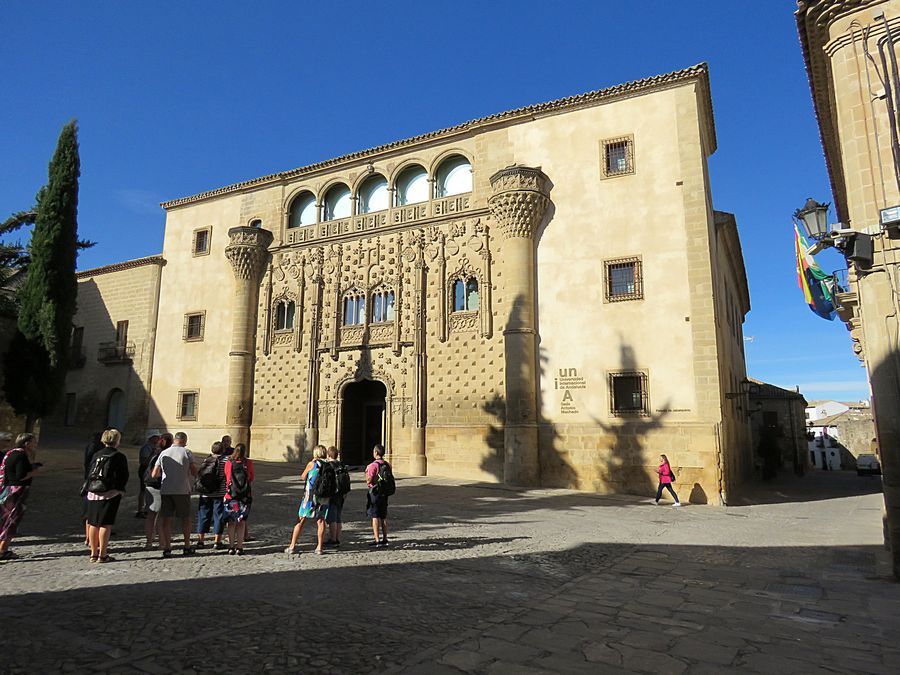
The town hall of Baeza, Spain
Baeza is an Andalusian town in in southern Spain.
It is perched
on a cliff. Like nearby Ubeda,
it is known for having some of the best preserved
examples of Italian Renaissance architecture in
Spain.
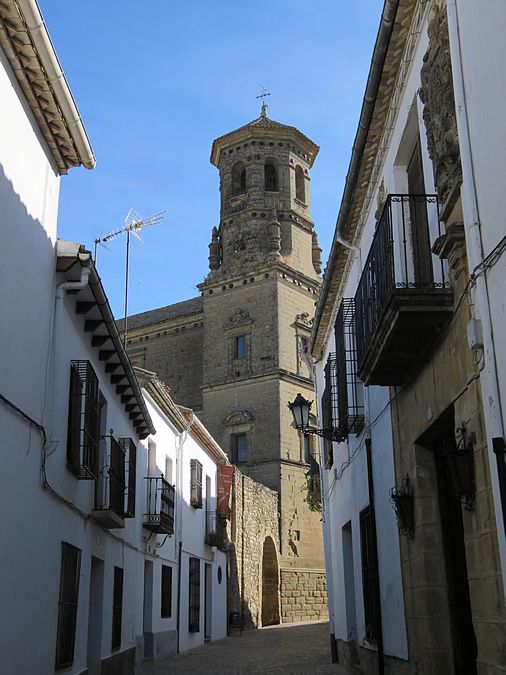
The Cathedral in Baeza
Baeza was once a Moorish town and was the first in Andalusia
to be reconquered in 1226.
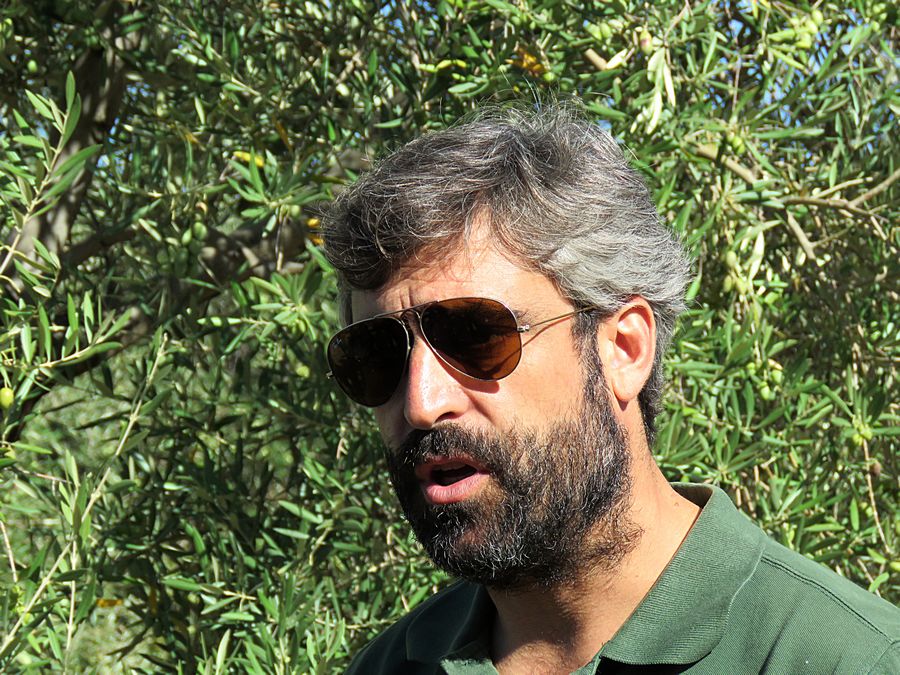
A guide, son of an olive oil producer, walked us
through a stand
of olive trees to describe
growing and harvesting olives. The area around
Ubeda and Baeza is surrounded by olive trees.
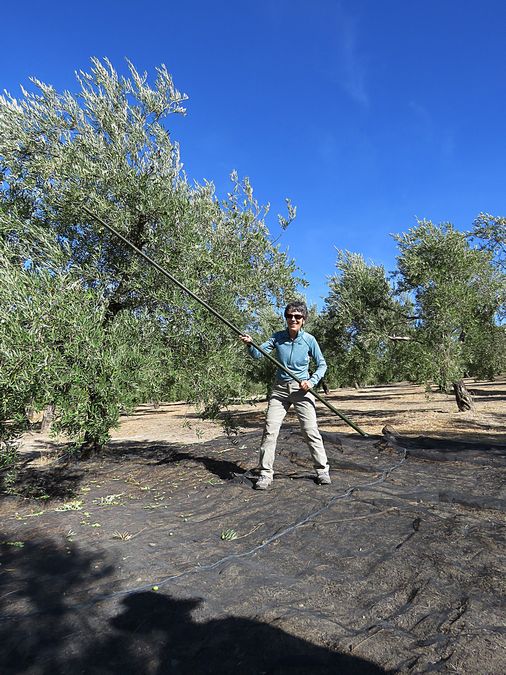
A "farm worker"
harvesting olives by using a long pole to
shake the
branches to knock down the olives,
which are then picked up
in the nets and droppped into baskets.
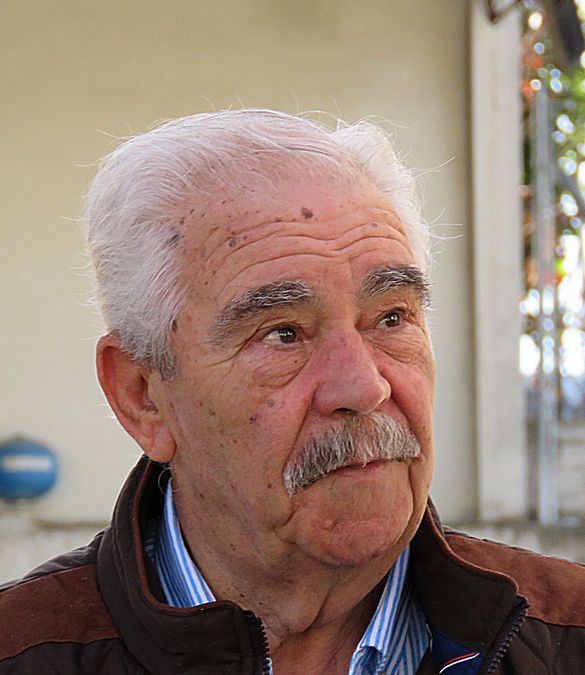
Owner of the olive oil mill that we visited, father of our local
guide that explained olive oil production to us.
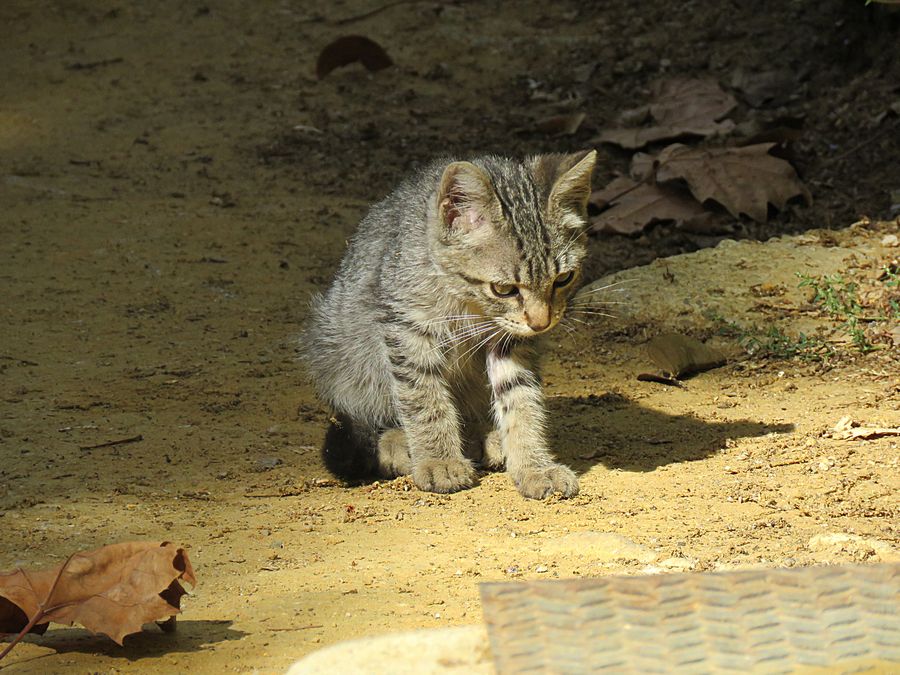
Kitten that was wandering around near our Parador
and the City
Hall when we arrived back in Ubeda.
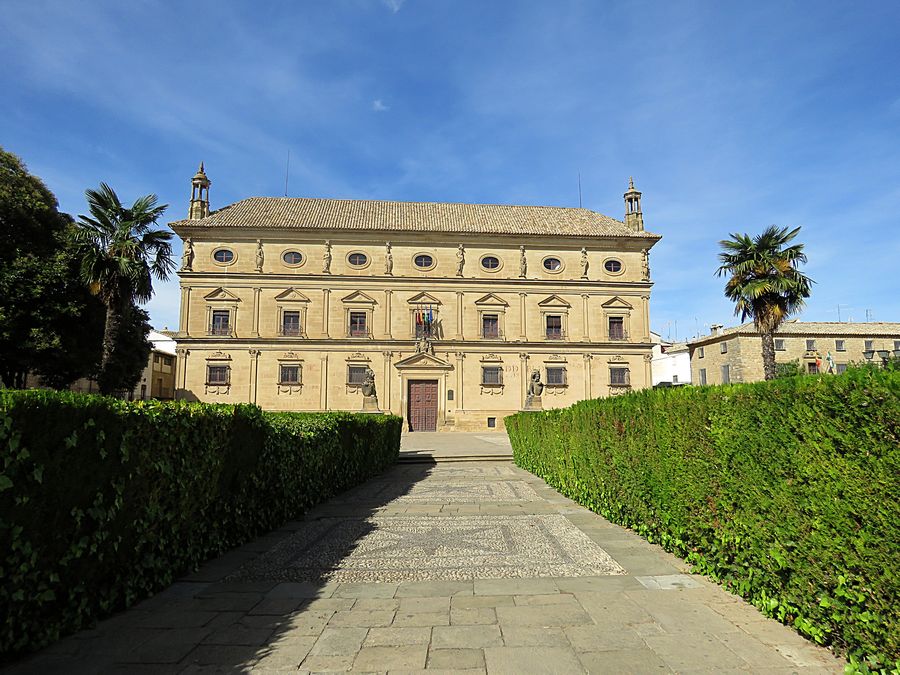
The Vazquez de Molina Palace, also known as the Palace
of the Chains is a
renaissance palace located
in Vazquez de Molina Square in Ubeda. It is
considered to be one of the best examples of
Renaissance architecture
in Spain. It was built
between 1546 and 1565. After the death of the owner
the palace became a convent of Dominican nuns, and was
remodeled to
accommodate the religious community.
In 1837, the building became
the City Hall of Ubeda.
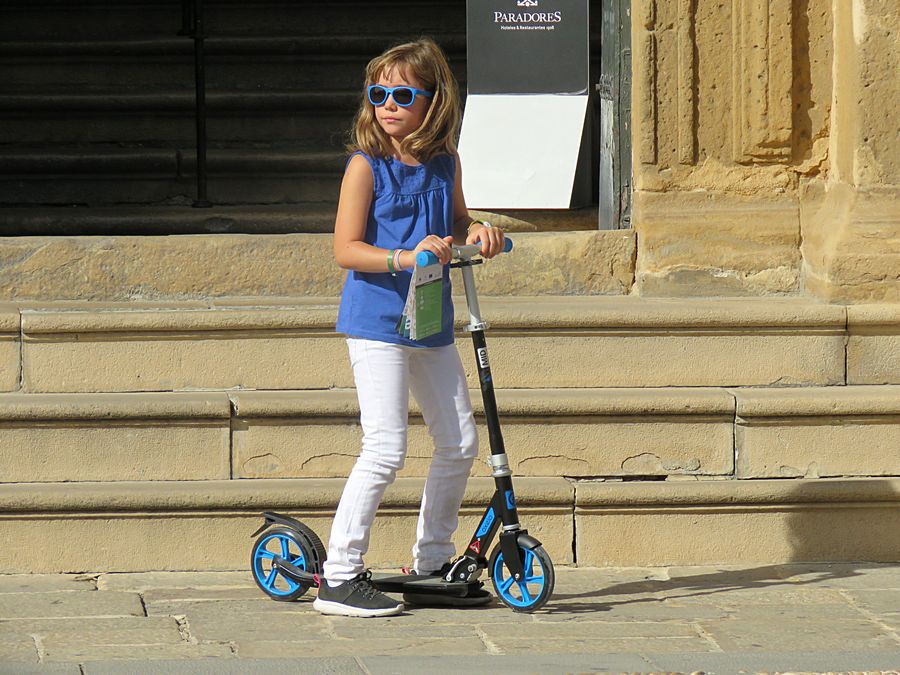
A Spanish youth in Ubeda
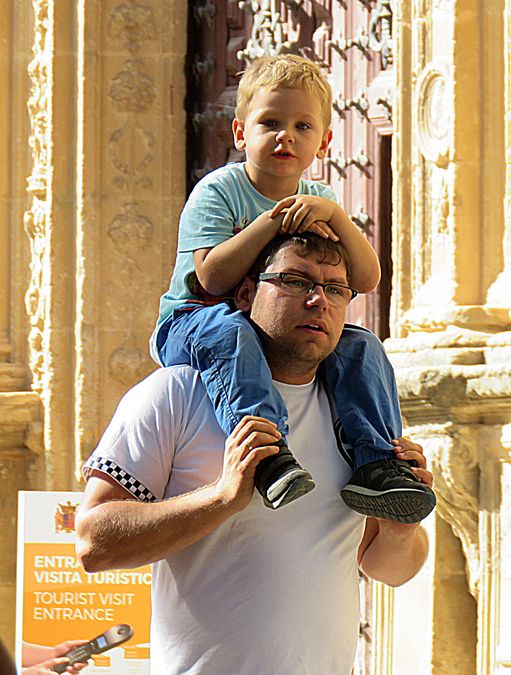
Father and son in Ubeda

Ubeda is bordered on all sides by many olive
groves that produce
some of the world's best olive oil.
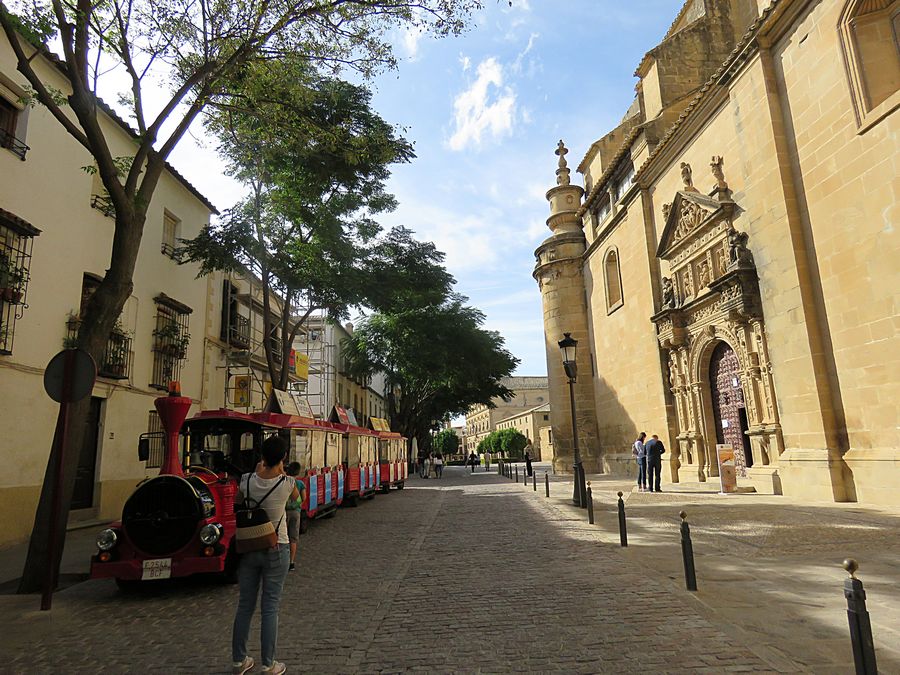
A tourist bus that looks like a train
in Ubeda, near our hotel.
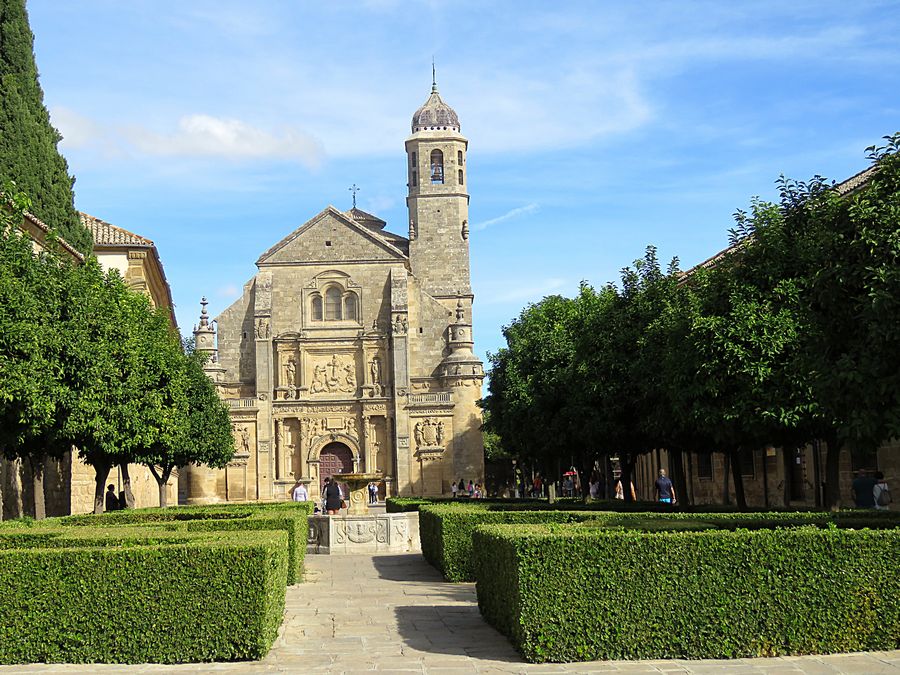
Another view of El Salvador Chapel,
Holy Chapel of the Savior
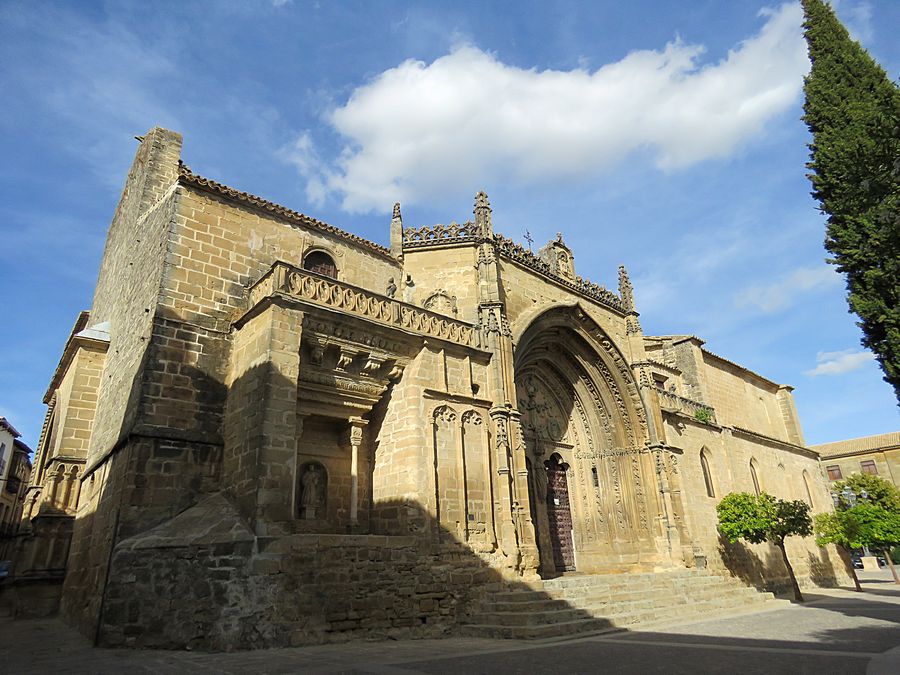
Iglesia de San Pablo, San Pablo Church, in Ubeda
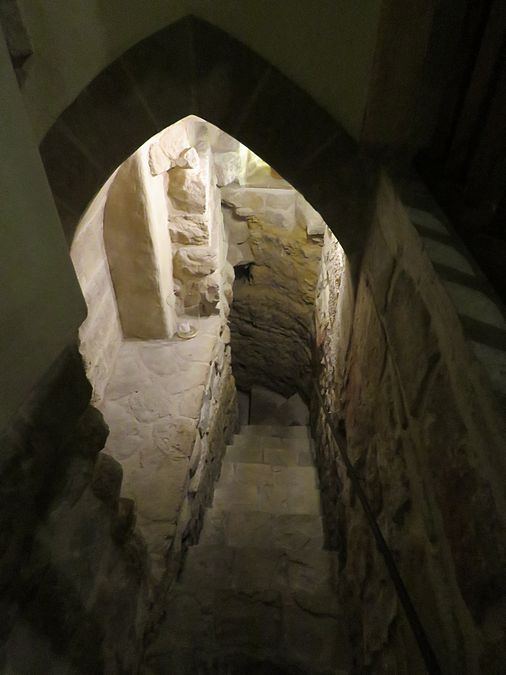
Sinagoga del Agua - steps leading to the worship area.
The Synagogue of Water of Ubeda was discovered by chance
by a
businessman during a real estate project, in what was
previously
a ladies'
hairdresser, to transform it
into what would be tourist apartments for the city.
But the walls of the old house, located in the heart of the old
town
of Ubeda,
had kept a treasure hidden for centuries:
a Jewish Synagogue, which
dates back to the 14th century.
Discovered when the building was being renovated
for the new apartments, the synagogue and Rabbi's house
have been
restored as a museum.
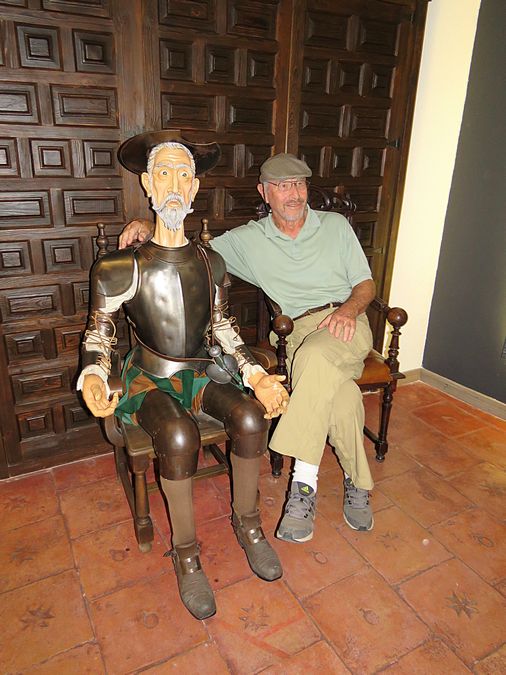
On our way to Toledo we stopped for a lunch break
and toured a small museum
dedicated to Cervantes.
Gerry and others from our group posed with him.
Miguel de Cervantes, born in 1547, was a Spanish writer
who is widely
regarded as the greatest writer in the Spanish
language
and one of the
world's greatest novelists.
His novel Don Quixote has been translated into
over 140 languages and dialects. After the Bible,
it is the most translated book
in the world.
Link to Part Two, Page Four - Toledo and Madrid
Pat's Home Page